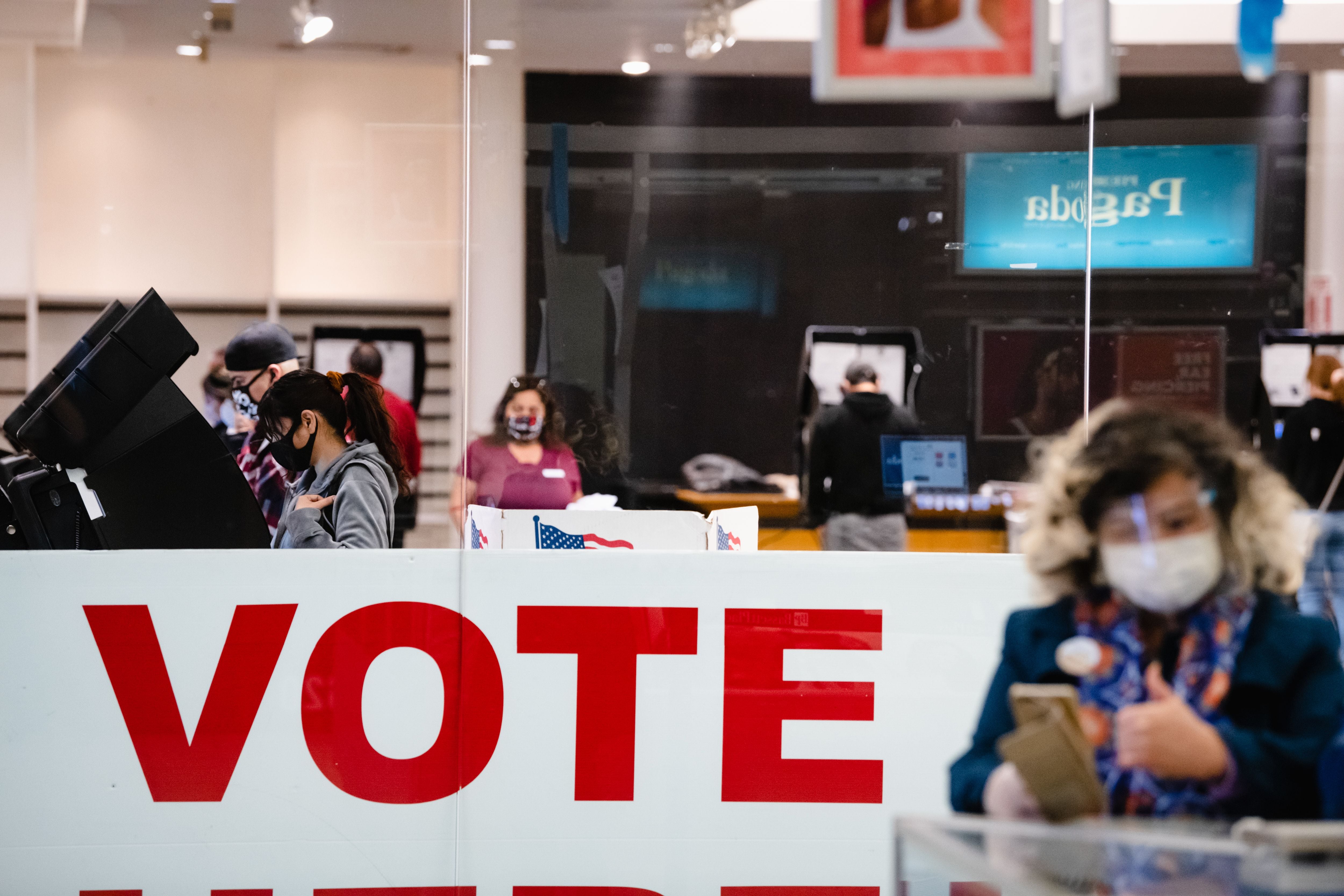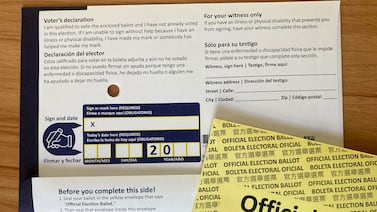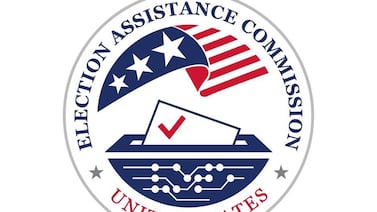The Texas Tribune is a Votebeat partner, and a nonprofit, nonpartisan media organization that informs Texans — and engages with them — about public policy, politics, government and statewide issues.
What dates do I need to know?
Oct. 11 is the last day to register to vote and to submit an address change for the midterm election.
You can report an address or name change online. You should do this if you’ve moved since the last time you voted, especially if you have moved to a different county or political subdivision, or have legally taken a different name.
How do I check if I’m registered to vote?
You can check to see if you’re registered and verify your information through the Texas Secretary of State’s website.
You’ll need one of the following three combinations to log in:
- Your Texas driver’s license number and date of birth.
- Your first and last names, date of birth and county you reside in.
- Your date of birth and Voter Unique Identifier, which appears on your voter registration certificate.
Read more about voter registration requirements further down in this story.
Oct. 28 is the last day to apply to vote by mail.
When do I need to drop off or mail an application?
Applications must be received by the early voting clerk in your county — not postmarked — by Oct. 28. Applications can also be submitted by fax or email, but the county must receive a hard copy within four business days. They can also be dropped off in person.
You can download an application here or request an application to be mailed to you here.
If you’re looking to vote by mail, give yourself as much leeway as possible. You’ll need to budget for the time it may take your county to get your ballot to you in the mail after you apply.
What is the deadline to mail my ballot?
The deadline for mail-in ballots to be returned to the county is Election Day, Nov. 8. If a ballot is postmarked by 7 p.m. locally that day, it’ll be counted if it’s received by the county by 5 p.m. Nov. 9.
Absentee ballots can also be delivered to the county elections office in person with a valid form of ID while polls are open on Election Day.
Completed ballots from military or overseas voters are accepted if they’re received by Nov. 14. (Military and overseas voters can go through a different ballot request and return process.)
Read more about vote-by-mail requirements in this section.
Early voting in person runs from Oct. 24 to Nov. 4. If you can’t vote inside of a polling place because of COVID-19 or a disability, curbside voting may be available to you. Read more about what qualifies as a disability here and about curbside voting options here.
Who is eligible to vote early?
Anyone who is registered to vote may vote early, but it must be done in person unless you qualify to vote by mail.
Where am I allowed to vote early?
Voters can cast ballots at any polling location in the county where they are registered to vote. Check your county elections office’s website for early-voting locations.
Election Day is Nov. 8.
Polls are open from 7 a.m. to 7 p.m. on Election Day.
Are polling locations the same on Election Day as they are during early voting?
Not always. Check the open polling locations in your area before you head to cast your ballot. In some counties, Election Day voting may be restricted to locations in your designated precinct. Other counties allow voters to cast their ballots at any polling place on Election Day.
Read more about poll options for those affected by COVID-19 in this section.
What do I need to know about voter registration requirements?
Who can register to vote in Texas?
U.S. citizens in Texas can register to vote in the election if they are 18 or older or if they will be 18 by Election Day.
Citizens in the state cannot register to vote if they have been convicted with a felony and are still serving a sentence, including parole or probation, or if they have been deemed mentally incapacitated in court. Here are more specifics on eligibility.
How do I register to vote?
You’ll need to fill out and submit a paper voter registration application by Oct. 11.
You can request a postage-paid application through the mail or find one at county voter registrars’ offices and some post offices, government offices or high schools. You can also print out the online application and mail it to the voter registrar in your county.
Applications must be postmarked by the Oct. 11 deadline. Download your application here.
Additionally, you can register to vote through the Texas Department of Public Safety while renewing your driver’s license, even if you’re doing so online. This is the only form of online registration in the state.
After you register to vote, you will receive a voter registration certificate within 30 days. It’ll contain your voter information, including the Voter Unique Identifier number needed to update your voter registration online. If the certificate has incorrect information, you’ll need to note corrections and send it to your local voter registrar as soon as possible.
The voter registration certificate can also be used as a secondary form of ID when you vote if you don’t have one of the seven state-approved photo IDs. More info on that here.
Do you have to reregister to vote?
Once you register to vote, you generally remain registered, but there are various reasons why you may want to verify your registration status. For example, you need to update your registration after a name or address change. You can make those updates online here.
If a county receives a nondeliverable notice after sending a voter registration certificate or suspects an address change, a voter is placed on a “suspense list” and asked to confirm their address. Voters on the suspense list can still vote if they update or confirm their address before the voter registration deadline for an election or fill out a “statement of residence” when voting, but they may have to vote at their previous polling location or vote on a limited ballot. If no action is taken by a suspended voter, they are removed from the voter rolls after about four years, said Sam Taylor, a spokesperson for the Texas secretary of state’s office.
The state also conducts reviews of voter rolls to remove what officials suspect might be ineligible registrations, which have incorrectly flagged naturalized citizens in the past. Federal law prevents the state from removing registered voters within 90 days of a federal election unless the voter has died, been convicted of a felony or been declared mentally incapacitated. That means naturalized citizens should not be removed from the voter rolls because of citizenship inquiries after Aug. 10.
If you’re concerned about your voter registration, you can verify it online here.
“We would urge folks to do that, you know, well before the Oct. 11 deadline, so that they have plenty of time to fix any issues,” Taylor said.
But if a voter is flagged incorrectly, Taylor said they can still vote if they present proof of citizenship, such as a naturalization certificate or U.S. passport, at the polls.
What if I moved after the voter registration deadline?
You must reside in a Texas county by the voter registration deadline to vote in the upcoming election unless you qualify for absentee voting. You can read more about absentee and mail-in voting here.
If you moved within the same county or political subdivision, you can vote at your previous polling location. Or you can vote at your new polling location on a ballot limited to the elections you would qualify to vote in at both polling locations, such as statewide races. But limited ballots are available only during early voting at a “main early voting polling place,” which is usually the office of the election administrator or county clerk who runs elections in your county. The main early voting polling place should be noted in a county’s list of early voting locations.
Eligible people experiencing homelessness can vote, Taylor said, as long as they provide on their registration an address and description for where they are residing. If needed, their mailing address can be different, he said, but a P.O. box address cannot be listed as a residence address.
What do I do if I run into issues with my voter registration?
If you have questions or concerns about your registration, you can find your county’s voter registration contact here.
Inside polling locations, there are typically “resolution desks” where poll workers can address registration issues.
You can also find more information on frequently asked questions from the secretary of state’s office at votetexas.gov.
If you run into any problems, we want to hear about them!
If you can’t see the form, you can open it in a new window here.








